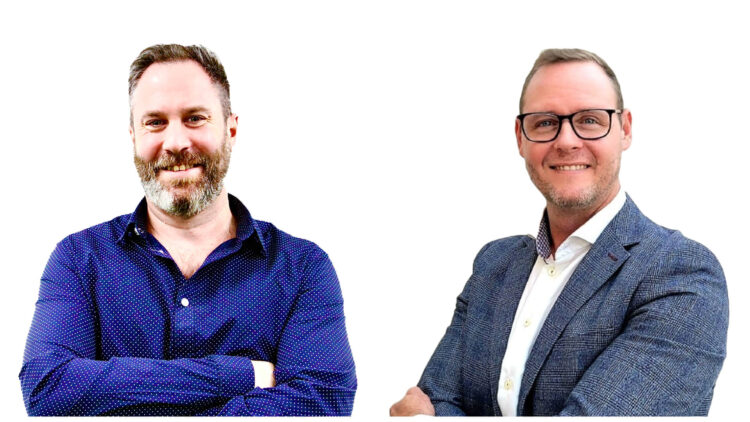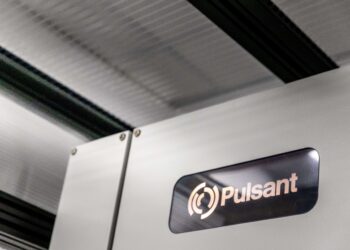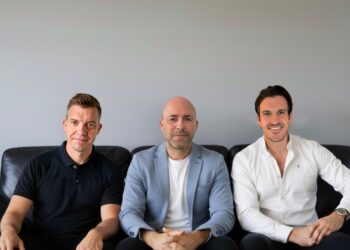In a recent conversation with Dave Phillips, Marketing Manager, and Gareth Meyer, Chief Revenue Officer at Technimove, the duo shed light on the company’s vision for 2025 and beyond.
As a market leader in professional services data centre transformation, Technimove’s commitment to channel partnerships and client success continues to drive its strategic initiatives.
From exploring acquisition opportunities in the US to strengthening its packaged services and expanding in emerging markets like the Nordics, Technimove is poised to shape the future of the industry.
Dave and Gareth explore key trends and insights, providing a roadmap for businesses navigating the complexities of modern data centre operations.
AI and GPU Workloads: A Catalyst for Modern Data Centres
The rise of AI-driven applications and GPU-based workloads has added a new layer of complexity to data centre design and operations.
Meyer says “Companies deploying AI at scale require infrastructure capable of handling massive computational power and data throughput. For example, many of the current DC pioneers are building facilities capable of supporting tens of thousands of GPUs to power applications”
The Nordics have emerged as a focal point in this shift. Their advanced infrastructure, abundant renewable energy, and innovative cooling technologies make the region ideal for high-performance data centres.
Nordic facilities, designed to handle megawatts per rack rather than kilowatts, are setting a benchmark for scalability and efficiency.
This evolution necessitates a new breed of data centre professional. Engineers must adapt to high-power environments, liquid-cooled systems, and rapidly advancing hardware.
Meyer continues “Technimove has prioritised upskilling its workforce, enabling our engineers to support these specialised environments and provide around-the-clock operational expertise.”
The Hybrid Data Centre Era: Balancing the Cloud and On-Prem Infrastructure
Over the past decade, the cloud has reigned supreme, promising scalability, flexibility, and agility. However, a growing number of organisations are reconsidering their heavy reliance on public cloud platforms.
“Rising costs, performance challenges for non-cloud-native applications, and the specialised demands of AI workloads are driving a shift back to hybrid infrastructure” Meyer says.
Hybrid environments, which combine public cloud resources with private, on-prem data centres, are gaining traction for their ability to offer the best of both worlds. They provide scalability and elasticity where needed while allowing businesses to retain control over sensitive data, reduce latency, and manage costs more effectively.
“While the public cloud served as a vital solution during the pandemic, businesses are now evaluating the cost-effectiveness and performance optimisation of hybrid models,” Meyer continues.
This shift reflects a broader recognition that infrastructure modernisation is not a one-size-fits-all approach but rather a tailored strategy to meet specific goals.
Sustainability: The Driving Force Behind Innovation
In the face of rising energy costs and environmental concerns, sustainability has become a cornerstone of data centre innovation. Operators are increasingly investing in renewable energy sources, optimised cooling systems, and efficient power utilisation to reduce their carbon footprint.
Meyer says “The Nordics, once again, are leading the charge. They have access to a lot more hydropower and geothermal energy, and facilities in that region offer something of a blueprint for greener data centres”
This focus on sustainability is not just a regulatory requirement – it’s hugely important as organisations face mounting pressure to align their operations with global climate goals.
For businesses operating in other regions, the Nordic model serves as a reminder of the potential for innovation in sustainable design, and that the path forward lies in proactive, long-term planning.
Simplifying Complexity: The Case for Packaged Services
As data centres become more complex, organisations must find ways to manage their infrastructure without overburdening their resources. This has led to a growing demand for packaged services that provide clarity, efficiency, and scalability.
Packaged offerings—such as physical data centre audits, power and cooling assessments, and network optimisation—enable businesses to focus on their core operations while experts handle the intricacies of modern infrastructure.
This model not only streamlines service delivery but also ensures that organisations can adapt quickly to changing demands.
Dave Phillips, Marketing Manager at Technimove, highlights the importance of this shift: “We aim to simplify service selection and scalability, ensuring clients can focus on their business while we handle the complexities. It’s important for that to come through in our messaging and marketing to let our clients – both new and existing – know that we’re putting their requirements first.”
The Road Ahead: 2025 and Beyond
The future of data centres will be defined by their ability to adapt to emerging trends while delivering reliable, efficient, and sustainable solutions. To stay ahead, organisations must embrace the following strategies:
Invest in Expertise: The demands of high-performance environments require a workforce skilled in cutting-edge technologies.
As Meyer says “Training and certifications will be key to Technimove maintaining our operational excellence and keeping us at the forefront of everything we do, and providing the best and most qualified people to deliver those services”
Adopt Hybrid Models: By balancing cloud and on-prem resources, businesses can achieve greater flexibility and cost control while meeting performance requirements.
Prioritise Sustainability: Energy efficiency and renewable resources should be at the forefront of every infrastructure decision, not just as a means of compliance but as a competitive advantage.
Leverage Partnerships: Collaboration with channel partners and specialised service providers can enhance operational efficiency and enable faster deployment of new technologies.
As the industry navigates this transformative era, thought leaders and innovators will play a critical role in shaping the future.
“By focusing on scalability, sustainability, and forward-thinking solutions, data centres can meet the challenges of 2025 and beyond. We want to empower businesses to thrive and grow – it’s a crucial part of our mission statement” Meyer says.
Technimove’s journey from data centre migration to professional services exemplifies the opportunities ahead. “Our mission is to provide clients with the tools and expertise they need to navigate this ever-changing landscape,” says Meyer. “We’re not just responding to industry trends—we’re helping to define them.”
This article was produced in association with Technimove and is classified as partner content. What is partner content? See more here.

















